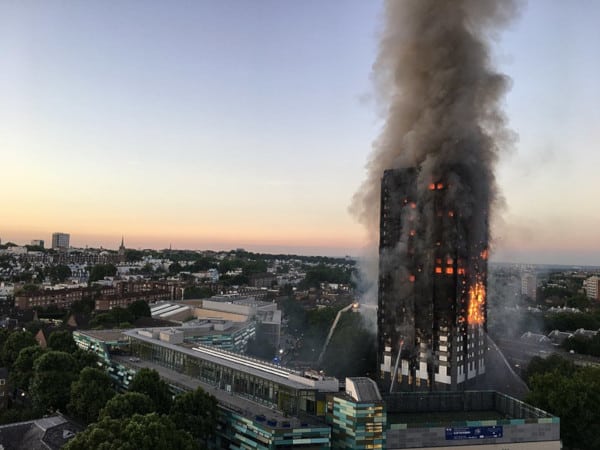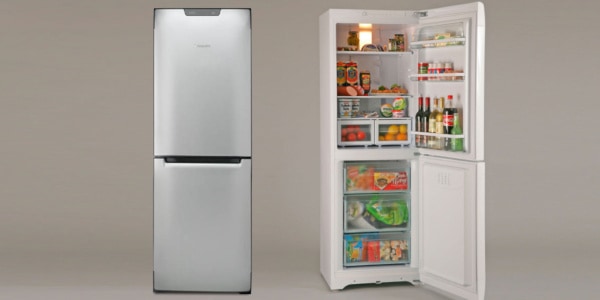The fallout from the fire at Grenfell Tower continues, with buildings throughout the United Kingdom at risk and blame to go around
Visit the website of the National Fire Protection Association—a 200-million-dollar nonprofit in the business of eliminating the human and economic cost of fires and electrical hazards—and you’ll find 275 volumes of codes and standards. These guides, which serve as model codes for law throughout much of the United States and even abroad, contain tens or hundreds of pages with thousands of rules so detailed that professional contractors must worry about the sort of grease they put between two pipes.
With so much information on hand, it’d be easy to think that London’s worst fire in decades might be, at worst, a small tragedy. But the fire at Grenfell Tower consumed the reputations of public officials and private companies, added to the political woes of a beleaguered prime minister, left scores of survivors homeless and victims dead, and launched a slate of investigations that show no signs of stopping even as Grenfell’s second anniversary approaches.
Perhaps worst of all is the fact that many living in Grenfell Tower—who called for investigations and fire safety reform years prior to the blaze—managed to see it coming. And in an article published less than a year earlier than the fire, members of the Grenfell Action Group wrote:
It is a truly terrifying thought but the Grenfell Action Group firmly believe that only a catastrophic event will expose the ineptitude and incompetence of our landlord… It is our conviction that a serious fire in a tower block or similar high density residential property is the most likely reason that those who wield power… will be found out and brought to justice.
How did it come to this? In this article, we look at the latest updates on Grenfell Tower, explaining what’s known about the fire’s origins and fallout. The building had significant fire safety deficiencies—including substandard construction materials and the absence of fire sprinklers—begging the question of whether fires like this could happen in the United States.
Hardship, confusion, and anger continue in the wake of the Grenfell tower fire
Before the fire, northwest London’s Grenfell Tower contained 227 bedrooms for those who couldn’t afford to buy or rent their own home. Nearly four million Britons live in “social housing”—including government-owned council homes like Grenfell Tower—with over a million more on waiting lists.
The fire caused 72 deaths and more than 70 injuries, making it the deadliest structural fire in the United Kingdom in nearly three decades and London’s worst residential fire since World War II. Investigations revealed that the fire started at a malfunctioning refrigerator on the fourth floor. But its rapid spread of throughout the building’s 24 stories has since been blamed on renovations that left the tower significantly more flammable—in particular, changes to the building’s cladding, or outer layer, and the external insulation.

Nearly two years later, Grenfell Tower remains in the public eye. Britons have since learned that more than 170 high rises were built with the same flammable material—a problem that will cost the British government more than 200 million pounds (roughly 250 million US dollars) to fix—and that as many as 1,700 hospitals, schools, nursing homes, and tower blocks may fail fire safety tests.
The Grenfell Tower fire spurred the resignation of local leaders and the withdrawal from sale of materials used in the tower’s construction. As Prime Minister Theresa May resigned earlier this month, she listed among her achievements her call for an inquiry into the fire’s causes, angering those who say that her policies made Grenfell possible. That inquiry is now months behind schedule, with the release of its findings scheduled for October of 2019.
With criminal charges unlikely to materialize until 2021, displaced families on waiting lists, and anxiety among those still living in similar buildings, the fire at Grenfell Tower won’t be quietly forgotten anytime soon.
An abundance of safety shortcomings enter the spotlight after the Grenfell Tower fire
While the official investigation remains in limbo, expert testimony and early reports have identified a troubling series of failures that made the fire at Grenfell Tower so devastating. Investigations firm Failure Electrical indicated to investigators that a poor crimp connection in a Whirlpool-brand fridge-freezer ignited the blaze. Tests by Whirlpool and Britain’s business ministry have led both groups to declare the Hotpoint FF175BP safe, although some consumer groups have urged against buying comparable fridges with a plastic backing.

While appliance fires continue to be a leading cause of kitchen fires—with refrigerators, ranges, and microwaves leading the way—other, more concerning failures of fire safety may have paved the way for this tragic event. At more than 40 years old, Grenfell Tower lacked important safety features now standard in modern high-rises: it had only one stairwell, no fire sprinklers, no fire doors, and no centralized alarm service.
Grenfell Tower underwent major renovations in 2015 and 2016. Those renovations didn’t include a fire sprinkler system. This isn’t unusual: 96 percent of council tower blocks in London don’t have fire sprinklers despite the fact that since 2007, towers over 30 meters tall (98 feet) require them. But that law doesn’t apply retroactively, and while fire officials and independent groups have called for fire sprinklers in residential buildings, government funding was repeatedly denied for installations.
Some, including the chair of the National Fire Chiefs Council, a labor union for chief fire officers in the United Kingdom, have suggested that fire sprinklers wouldn’t have made a difference in the Grenfell Tower fire because the fire spread through the outside of the building. Nevertheless, fire sprinkler firms have found themselves unable to keep pace with requests for systems, with nearly 90 percent of companies reporting anywhere from twice as many to six times as many quotes delivered in the wake of the tragedy.
Aluminum cladding now takes the heat for the fire at Grenfell Tower
Surprisingly, it’s more recent changes to the building that enabled the fire to spread. During renovations conducted in 2015 and 2016, builders and owners agreed to install aluminum cladding in place of zinc cladding, a decision which cut costs by more than $350,000 from a project contracted for over $11.5 million. Recent investigations suggest that this goes beyond run-of-the-mill cost-cutting, with financial data showing that Kensington and Chelsea Council—the local government responsible for Grenfell Tower—had reserves exceeding $150 million.
Cladding, an extra skin or layer on the outside of a building, can protect against weather events, hot and cold temperatures, and fire. At Grenfell, that cladding consisted of a thin aluminum sheeting surrounding a flammable polyethylene core. When joined with a gap of air that “acted like a chimney” and flammable, toxic insulation designed only for use with non-combustible cladding, the tower’s exterior became frighteningly flammable, as the video below shows:
Since the fire, the insulation and cladding used at Grenfell have been withdrawn from sale. But tests following the tragedy have found that hospitals, primary schools, and other public housing utilize the material. And the issue extends beyond aluminum composite material (ACM) cladding, with inspections finding that buildings throughout the United Kingdom utilize high-pressure laminate (HPL) and other cladding types that release 115 times the heat as their non-combustible alternatives.
The fire at Grenfell Tower may repeat itself if building codes are loosened or poorly enforced
Jurisdictions adopting the International Building Code require siding for tall buildings to meet the standards of NFPA 285, which provides methods for testing the flammability and combustibility of exterior wall construction. These tests consider how fire spreads vertically and horizontally over the face, core, and interior surface of walls as they’re installed in particular buildings, as the video below shows:
But some jurisdictions have made exceptions for this type of equipment in the past few years, including Washington, D.C., Minnesota, Indiana, and Massachusetts. The reason may be cost: NFPA 285’s tests can be expensive—$30,000 or more for each building. But in New York, for example, aluminum panels with a flammable polyethylene core aren’t legal to install. Fire code in the United States consists of a hodgepodge of city, county, and state laws. As such, the answer to whether or not a Grenfell-style fire could happen in the United States varies from place to place.
Jim Pauley, president of the National Fire Protection Association suggests that Grenfell Tower is one of many recent and deadly fires that point to a “global problem” of fire safety—outdated codes, dangerous cost-cutting measures, and the failure to follow or enforce existing fire safety standards have put lives at risk across the world. He adds that a “loosening” of building code standards—including changes in other codes governing exterior wall coverings on high-rises—is a trend and not an exception.
Existing codes and practices make cities safer
The tragic fires of the past have left survivors and future generations with a better sense of how to build a safer world. But the fire at Grenfell Tower offers few, if any, new lessons on how buildings should be constructed—instead, it points to the devastating costs of corner-cutting and the watering down of codes that already exist.
Let’s end on a more positive note, though: many older buildings can and have been made significantly safer thanks to careful, code-compliant retrofits. Fire sprinklers, for example, are now being required in more venues such as nightclubs and high-rise residential buildings where lots of people live or gather. Read these previous blogs for more detail:
“Why and When the US Retrofits Sprinklers in Existing Buildings.”
“Retrofitting Fire Sprinklers: What a Large-Scale Project Needs for Success.”
The standards for these projects vary—and not all retrofits focus solely on fire sprinklers—but installers can take steps to minimize disruptions to residents and bring buildings into compliance with a variety of new laws, existing laws, and model codes.
QRFS strives to stay on top of developments in fire safety. If you have questions about this article, call us at +1 (888) 361-6662 or email support@qrfs.com. If you’re in the industry, we invite you to view our selection of fire safety products that support a safe, code-compliant installation.
This blog was originally posted at blog.qrfs.com. Visit us at Facebook.com/QuickResponseFireSupply or on Twitter @QuickResponseFS.


